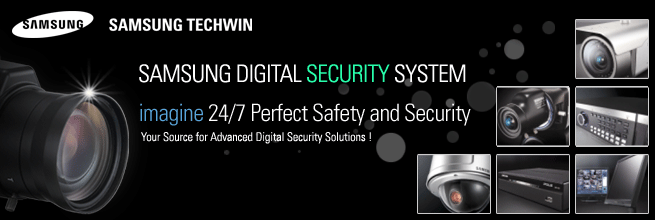
The CCTV industry has seen the use of wireless technology increase in recent years. This increase has largely been due to the many technological advances made by the wireless community to satisfy the industry’s underlying doubts surrounding wireless technology. Also the integration and adoption of computer networking and the use of digital technologies have further increased the appeal of wireless CCTV as a practical and economical solution.
By Steve Clifford
CCTV WIRELESS SOLUTIONS
Wireless CCTV uses CCTV cameras without wires that can broadcast their pictures back to base without the need for cable, via infrared/laser or microwave transmission. With the growth in the acceptance of wireless technologies and converging technologies, there has been a boom in secure, digital wireless networked video. In the past, the industry was reluctant to embrace such technologies due to the overriding issues of lack of security and reliability with wireless transmission of CCTV images. However, technology has now conquered these issues and the industries fears can be laid to rest.
WIRELESS CCTV -- THE BENEFITS
Most CCTV equipment is in one place. Once you have installed a camera, and laid all the wires back to base, it is fixed and cannot move, this can be a major issue with wired CCTV systems.
However, wireless technology’s major benefit is its application where a free-space data link over distances of hundreds of meters or even over a few km can be much more simple and cost-effective to install than any kind of cable, particularly if a road or some other kind of barrier has to be crossed (as a data link between metropolitan buildings), or if a connection is required only for a limited time.
The increasing integration of CCTV systems with the existing IT infrastructure of a business has led to more standardized technology (IEEE) which allows for non proprietary technologies to be used together. Wireless IP CCTV can be integrated into any existing IP network and has the added advantage of mobility and increases business flexibility when it comes to video surveillance.
Also as more and more emerging technologies appear on the market, the once touted price barrier to wireless CCTV is now broken and such systems are now able to compete on price with their respective wired CCTV systems.
HOW IT WORKS
Wireless transmission refers to the transmission of modulated signals through the atmosphere to obtain broadband communications. Most frequently, laser beams are used, although with the adoption of IP networking by the CCTV industry WiFi is now becoming a more common alternative.
Wireless transmission requires the use of a transmitter, situated at the camera end, and a receiver at the control end. At the source, the signal is modulated with the data to be transmitted. At the destination, the signal is intercepted and the data is extracted from the signal (demodulated), and the resulting signal is amplified and sent to the hardware. Infrared and laser beam systems require that there be a direct line of sight between the transmitter and receiver. Normally there are one transmitter and one receiver per camera. Both transmitter and receiver need to be very rigidly mounted, as it is important for the receiver to receive as much of the transmitted signal as possible and any movement in either could disturb the signal.
THE TECHNOLOGICAL BREAKTHROUGHS
With the emergence of digital technologies and networked Internet Protocol (IP) video surveillance cameras and IP video servers -- along with the rising use of Digital Video Recorders (DVRs), many fears of wireless video transmission have been overcome. What used to be a market consisting of laser/infrared transceiver devices transmitting an analogue signal has now become a digital-based market which offers more in way of security and reliability and is incorporating many of the new emerging technologies, entering the IP computer networking markets.
Security
The major security issue with wireless was seen with the use of analogue wireless technology and was the main reason people gave for not utilizing wireless video. Effectively with a wireless analogue video system, it was possible, for anyone with the right technology, to tap into the system and see the video images being transmitted.
However, with digital wireless technology this issue is overcome. Infrared and laser beam systems can now benefit from quantum cryptography and thus the security can be extremely high. WiFi, originally used WEP encryption, was able to be hacked in minutes by hackers with the correct equipment, but now it incorporates the much more secure 128-bit encryption, WPA. Also with the incorporation of IP networking this offers further levels of encryption and SSL authentication -- widely used in secure transactional internet sites. Now wireless CCTV incorporates robust encryption, the security issues once associated with such systems are no longer a valid reason for not incorporating wireless technology in CCTV solutions.
Reliability
Again, the main issue of reliability has been brought along by analogue wireless solutions. Outdoors, any bad weather brought major problems to a wireless environment. Also, any reflective surfaces caused ‘ghosting’ of video images.
However, in the digital world the 802.11 standard (the standard WiFi is based upon) overcomes many, but not all of the reliability issues on its own.
When you review the major strides forward in security and reliability of certain digital wireless video network solutions, it could be hard to see why more hasn’t been made of the technology.
Capacity
Within analogue solutions, whether you were using the 2.4 or increased 5.x GHz wireless bands, you can only get three cameras streaming video of good quality, however, with digital solutions that use high quality MPEG-4 (rather than JPEG) video, one can actually achieve between 9 and 33 cameras installed on the 2.4 GHz bands, or between 33 and 120 cameras over the latest 5.x GHz bands. This allows for much more compressed video, over much longer distances than has previously been experienced.
Simplicity
Inherently, wireless video networking, whether digital or analogue, involves many pieces of equipment, including encoders, wireless radios, telemetry, alarms, audio devices, etc. But technology differs greatly, and as such the extent of devices needed differs too, technology is available that brings together wireless video, audio, PTZ control, alarms, motion detection, etc. in a single box.
When you consider the initial issues of security and reliability, and combine the problems of wireless video capacity and the ease of implementation, only a limited amount of vendors are able to deliver solutions, but of these, only a handful is capable of networking multiple cameras in real-time to a control room.
Some manufacturers offer a short-range, low-cost, 2.4 GHz product line based on 2.4 GHz 802.11b and a longer-range, higher capacity proprietary solution based on the 5.x GHz band. These solutions are combined with JPEG digital cameras and video servers to offer a wireless CCTV solution. At the control room, the video can be converted back to analogue and fed to a conventional matrix or digital DVR, or it can be integrated with a software-based DVR solution.
There are other manufacturers that offer a dual-band solution operating within 5.3 and 5.8 GHz bands. These solutions can be combined with JPEG cameras and video servers to offer a complete solution. At the control room, the video can also be transferred back to analogue or integrated with a third-party software solution.
THE FUTURE OF WIRELESS CCTV
The closer integration of CCTV systems and wireless components will be a strong trend of future systems as it offers two important benefits:
Typically perimeter protection is the current focus of CCTV integrators because the solution can be so compelling in terms of cost reduction when compared to cabling. A wireless camera brings many benefits to indoor CCTV. Installation costs are significantly reduced and cameras can be deployed anywhere within the building without physical constraints. Without the restriction of a coax or Ethernet cable, the cameras can quickly be redeployed from an existing security hot spot to a new location to make the best use of the CCTV system.
The migration to digital, fully networked systems, increasing security needs and innovation are driving the growth in the IP Video Surveillance market. This expansion is being helped considerably by the idea of networked video surveillance, which allows for greater flexibility, field upgradability, increased automation and more intelligence to be incorporated into the overall system. IP cameras will continue to displace existing Closed Circuit Television (CCTV) cameras, even among consumers, while DVRs are increasingly evolving into networked devices. The increase in the growth of this market will only help the market for wireless IP CCTV. Once the benefits of networked systems are experienced, the next logical step will be to integrate wireless and so experience the added benefits of wireless IP CCTV.
However, the wireless video surveillance market still faces challenges. Customer awareness and expertise with networked surveillance will need to be increased but this should occur over time.
Other challenges include:
·Security customers are traditionally conservative.
·Security distributors and sellers lack expertise in IT and networking.
·IT Companies lack security expertise.
·Decision-making and buying will become more complex because of coordination and conflicts between IT and security organizations.
The future market for wireless video transmission and its many applications looks fruitful. The many benefits are now beginning to far outweigh any doubts the industry harbored. The ease with which these technologies can be incorporated into exiting CCTV systems and new systems makes for a promising future. Also there is a constant flow of emerging technologies entering the market and the integration of CCTV technologies with the computer networking arena will only add to a healthy outlook, ensuring prices are competitive and security and reliability come as standard.
This technological advance in the digital field has led and will lead video surveillance into moving beyond traditional security and into new applications such as transportation, retail, government and even home networking. It is also far easier for businesses to incorporate CCTV systems, as the infrastructure is already in place, that infrastructure being the existing computer network, and with many of the same technologies being used, IT professionals are able to adopt these systems without too much upheaval and change to their existing infrastructure
So as we can see the migration from analogue to digital video transmission has paved the way for many emerging technologies to be integrated into the CCTV market. This has led to increases in security, reliability, capability and ease of installation. Many of the myths of wireless CCTV have been dispelled and the industry can finally embrace CCTV and all it has to offer now and in the future.
Steve Clifford is Director of Marbella CCTV Systems (www.marbellacctvsystems.com).
For more information, please send your e-mails to swm@infothe.com.
ⓒ2007 www.SecurityWorldMag.com. All rights reserved.
|



